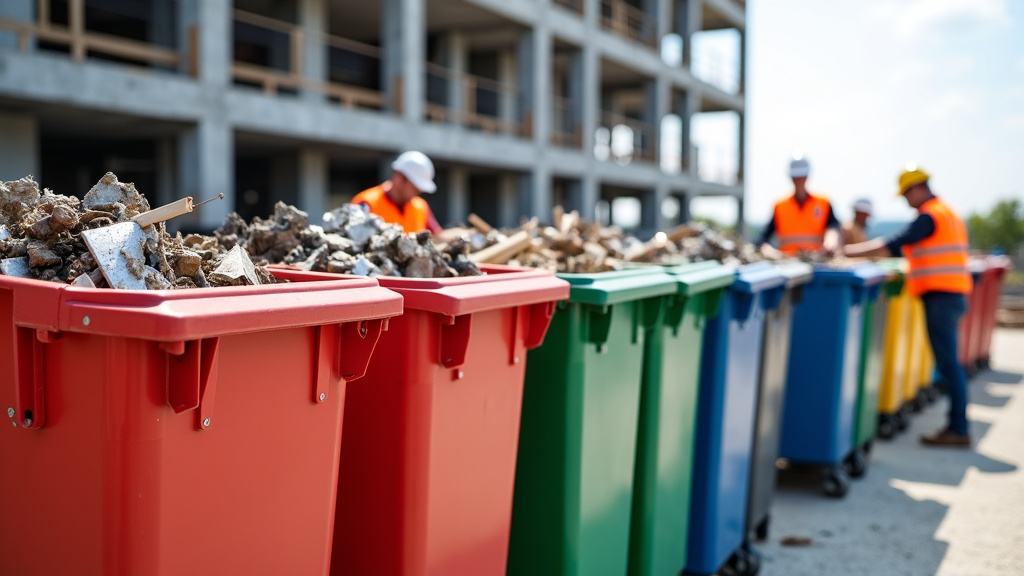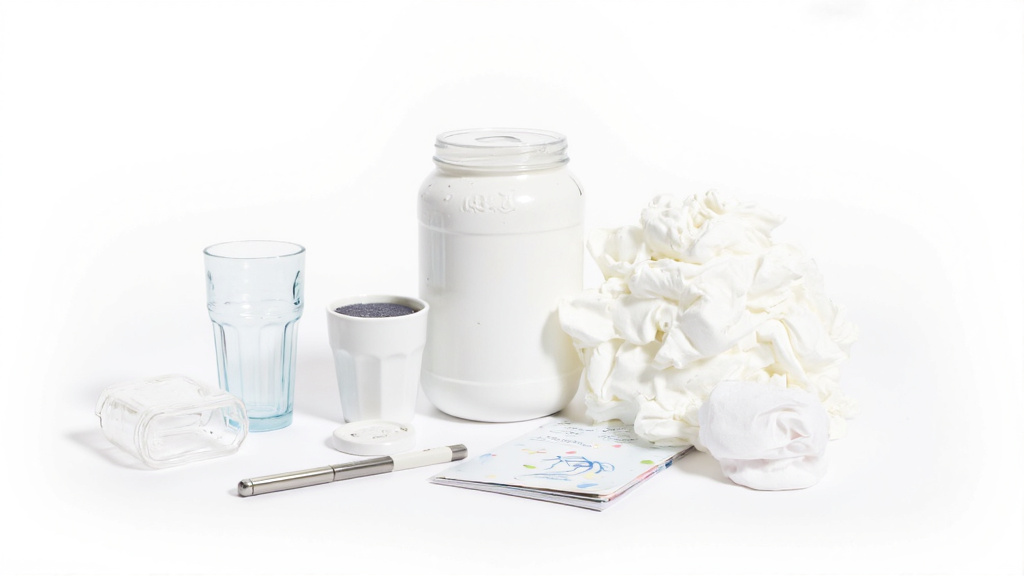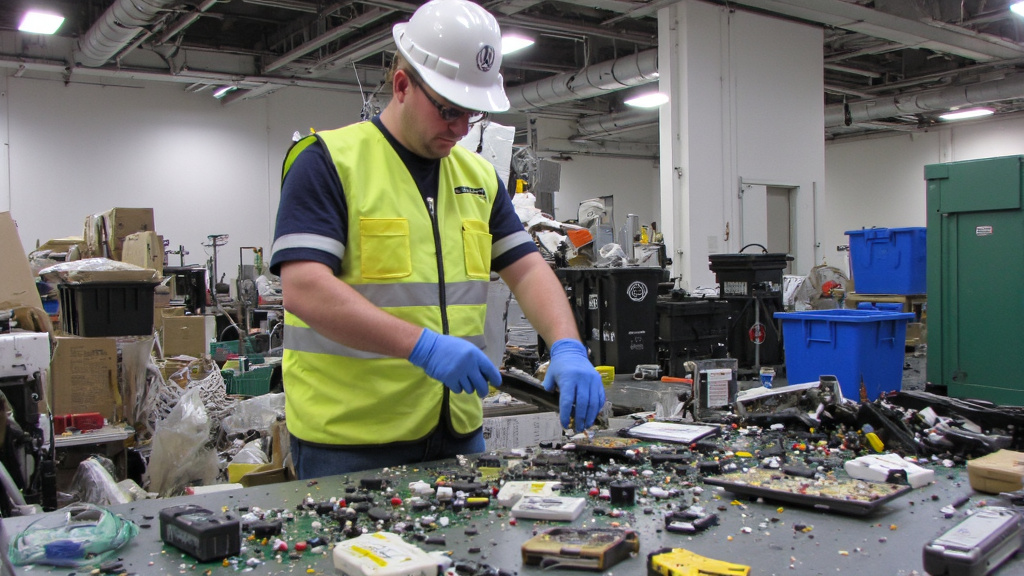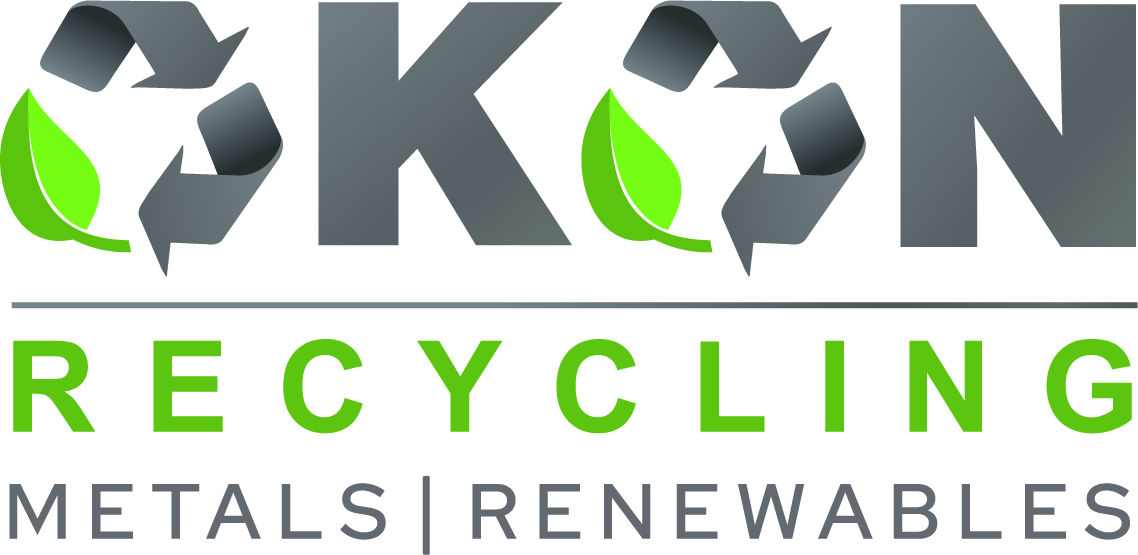5901 Botham Jean Blvd, Dallas, TX 75215
How to Recycle Safely and Responsibly
April 17, 2025Every time you toss an aluminum can into a recycling bin instead of the trash, you’re making a choice that extends far beyond your home. Recycling is one of our most accessible tools for environmental conservation, yet many people find themselves confused by conflicting guidelines and varying local regulations.
At its core, recycling transforms what would otherwise become waste into valuable resources. This process conserves natural materials, saves energy, reduces landfill use, and minimizes pollution. For instance, recycling just 10 plastic bottles saves enough energy to power a laptop for more than 25 hours, illustrating how small actions accumulate into significant environmental benefits.
However, recycling effectively requires more than good intentions. Regional differences in accepted materials and the complexities of proper sorting can lead to unintentional contamination of recycling streams. This guide will help you address these challenges with clear, actionable information on recycling safely and responsibly—ensuring your environmental efforts truly make the positive impact you intend.
What Are the Basics of Responsible Recycling?

Successful recycling begins with understanding your local recycling guidelines. These rules vary significantly between municipalities, so familiarizing yourself with what your community accepts is essential. Most programs accept paper, cardboard, certain plastics, glass, and metal cans, but specifics can vary based on local processing capabilities.
Keep It Clean and Dry
Contamination poses a major challenge to effective recycling. Food residue, liquids, and non-recyclable materials mixed with recyclables can render an entire batch unusable. Before placing items in your recycling bin, ensure containers are empty and give them a quick rinse to remove food particles and residue.
This step prevents cross-contamination and deters pests attracted to food odors. Clean recyclables maintain the quality of the recycling stream and make processing more efficient. Even small amounts of contamination can compromise large batches of otherwise recyclable materials.
Proper Separation Techniques
Effective recycling requires proper sorting. Many communities now use single-stream recycling, allowing paper, plastic, metal, and glass to go into one bin. However, this convenience doesn’t mean everything can be recycled together. Plastic bags, for instance, should never go in regular recycling bins as they jam sorting machinery.
Remove non-recyclable components from items before recycling. For example, separate plastic windows from paper envelopes and remove plastic caps from glass bottles if required by local guidelines. Break down cardboard boxes to save space and ensure they’re empty of packaging materials like styrofoam or plastic film.
Common Recycling Mistakes to Avoid
Several recycling errors can undermine even the best intentions. Greasy pizza boxes, despite being cardboard, typically can’t be recycled because the oil contamination interferes with the recycling process. Similarly, items like batteries, electronics, and hazardous materials should never go in standard recycling bins as they require specialized handling.
Avoid “wishcycling” – the practice of placing items in recycling bins hoping they’re recyclable. This habit increases contamination rates and processing costs. When in doubt about an item’s recyclability, it’s better to place it in the trash than risk contaminating recyclable materials.
| Item | Recyclability |
| Cardboard | Highly recyclable, but must be flattened and clean |
| Home Electronics | Can be recycled for parts or repurposed |
| Cell Phones | Recyclable, often have value for materials |
| Batteries | Recyclable at specialized facilities |
| Crayons | Recyclable through specific programs |
| Wine Corks | Natural corks can be recycled; synthetic corks go in regular recycling |
Organizing Your Recycling System
Creating an efficient home recycling system makes responsible recycling easier. Designate specific containers for different recyclables based on your local requirements. Using color-coded bins can provide visual cues that help household members sort correctly. Place recycling bins in strategic locations where most recyclable items are generated, such as the kitchen or home office.
Consider establishing a staging area for items that require special handling, like batteries or electronics. This prevents these items from accidentally entering the regular recycling stream while ensuring they’re properly managed. Regular maintenance of your recycling system, including cleaning bins and reviewing local guidelines for updates, helps sustain good recycling habits.
How Can You Reduce Waste Before Recycling?
One of the simplest ways to reduce waste is by embracing reusable alternatives to single-use products. Everyday items like coffee cups, water bottles, and shopping bags can be replaced with durable versions, preventing hundreds of disposable items from entering landfills each year. A single reusable coffee cup can replace hundreds of disposable cups annually.
Mindful purchasing decisions are crucial for waste reduction. Before buying something new, ask yourself if you truly need it. When shopping, prioritize quality over quantity by investing in well-made, durable products that won’t need frequent replacement. This approach not only reduces waste but often saves money in the long run.
Packaging waste represents a significant portion of our trash. Choose products with minimal packaging when possible, and support brands that use recyclable or biodegradable materials. Shopping in bulk for items like grains, nuts, and cleaning supplies can dramatically reduce packaging waste, especially when you bring your own containers.
In the kitchen, practical waste reduction strategies can make a substantial difference. Replace plastic wrap with reusable beeswax or vegan food wraps that can last up to a year with proper care. Silicone baking mats can substitute for thousands of sheets of parchment paper, while reusable silicone food storage bags eliminate the need for disposable plastic bags.
Consider borrowing or sharing items you only need occasionally instead of purchasing them new. Tools, party decorations, and specialty kitchen appliances are perfect candidates for sharing economies that reduce overall consumption and waste.
For personal care, numerous reusable alternatives significantly reduce waste. Reusable ear swabs, refillable deodorant containers, and fabric makeup removers replace single-use versions that contribute to unnecessary waste. These small changes add up to meaningful waste reduction over time.
Sustainable food practices also play a key role in waste reduction. Plan meals ahead to avoid impulse purchases that often lead to food waste. Store food properly to extend shelf life, and transform leftovers into new meals whenever possible. Composting food scraps provides a way to keep organic waste out of landfills while creating nutrient-rich soil for gardens.
Finally, support the circular economy by shopping second-hand when possible. Thrift stores, online marketplaces, and community swap events provide opportunities to find quality items without the environmental impact of new production. Giving products a second life prevents them from ending up in landfills prematurely.
| Metric | Single-Use Items | Reusable Alternatives |
|---|---|---|
| Greenhouse Gas Emissions | Higher emissions due to extraction and manufacturing | Lower emissions after multiple uses |
| Water Consumption | Higher during production | Higher during use phase (washing) |
| Resource Extraction | High due to frequent production | Lower as items are reused |
| Waste Generation | Generates significant waste | Less waste as items are reused |
| Litter Generation | Contributes to litter | Reduces litter |
| Plastic Pollution | Major contributor | Minimized with reuse |
What Materials Can Be Recycled and How?

The recycling industry accepts a wide range of materials, though acceptance policies vary by location. Knowing what can be recycled and how to prepare these materials properly ensures higher recycling rates and reduces contamination in the recycling stream.
Paper and Cardboard
Paper products are among the most commonly recycled materials worldwide. Newspapers, office paper, magazines, and cardboard boxes are typically recyclable through curbside programs. When recycling cardboard, remove any plastic film, styrofoam inserts, or food residue.
Cardboard pizza boxes present a special case – boxes without leftovers or greasy liners should be recycled, but sections with food residue should be torn off and discarded. Always flatten cardboard boxes to save space in recycling bins and improve processing efficiency.
Plastics
Not all plastics are created equal when it comes to recycling. Most curbside programs accept plastic bottles, jars, jugs, and tubs labeled with recycling symbols #1 (PET) and #2 (HDPE). These include water bottles, milk jugs, and detergent containers.
When preparing plastics for recycling, empty and rinse containers to remove food residue, then replace caps before placing them in your bin. Containers don’t need to be spotless—just free of most food waste to avoid contaminating other recyclables.
Plastic bags, film, and flexible packaging typically cannot be recycled in standard curbside programs. These items can jam sorting equipment and contaminate other recyclables. Instead, many grocery stores offer collection points specifically for plastic bags and film.
Glass
Glass bottles and containers are infinitely recyclable without loss of quality. However, acceptance of glass in recycling programs varies significantly by jurisdiction. Some communities collect glass with other recyclables, while others require separate collection or designated drop-off locations.
When recycling glass, remove caps and lids (which are often made from different materials), and rinse containers to remove food residue. Avoid placing broken glass in curbside bins, as it can pose safety risks to workers and contaminate other recyclables.
Metals
Most recycling programs accept food and beverage cans made from aluminum or steel. These materials are highly valuable in the recycling stream. Clean cans by rinsing out food residue before placing them in your recycling bin.
Empty aerosol cans are accepted by many recycling programs, but they must be completely empty and dry with caps removed. Partially full aerosol cans can be dangerous, potentially causing fires in baling machines or becoming projectiles when compressed.
Common Recycling Requirements
Regardless of material type, most recycling programs share these common preparation requirements:
- Keep recyclables clean and dry
- Empty and rinse food containers
- Do not bag recyclables – empty them directly into your bin
- Flatten cardboard and paperboard
- Follow local guidelines, which may have specific requirements
Remember that recycling programs vary widely by location. Materials accepted in one municipality may be rejected in another. Always check your local recycling guidelines to confirm what’s recyclable in your area and how items should be prepared.
How Should You Handle Special or Hazardous Waste?

Special waste items require careful handling and specific disposal protocols that differ significantly from regular recycling processes. Electronics, batteries, and household hazardous materials contain toxic components that can leach harmful chemicals into soil and water supplies when improperly discarded.
Electronic Waste Management
Electronic waste (e-waste) includes computers, smartphones, tablets, digital cameras, and gaming consoles that have reached the end of their useful life. These devices contain valuable recoverable materials alongside potentially harmful substances like lead, mercury, and flame retardants.
Before disposing of electronic devices, take steps to protect your personal information. Simply deleting files is insufficient—the data remains recoverable. Instead, use specialized disk cleaning software that permanently removes data by overwriting all areas of your hard drive multiple times. For smartphones and tablets, perform a factory reset and physically remove memory cards and SIM cards.
For disposal, several responsible options exist. E-waste recycling centers specialize in safely dismantling electronic devices to recover valuable materials while properly handling hazardous components. Many retailers and manufacturers also offer take-back programs that accept old devices, sometimes offering trade-in credit toward new purchases.
Battery Recycling Requirements
Batteries contain various chemicals and metals that pose significant environmental hazards. Rechargeable batteries (lithium-ion, nickel-cadmium) and button batteries (used in watches and hearing aids) are particularly concerning due to their toxic content.
Many communities have dedicated collection points for battery recycling at hardware stores, electronic retailers, and municipal waste facilities. Some battery manufacturers and retailers participate in voluntary collection programs that accept used batteries for proper processing.
Always tape the terminals of lithium batteries before disposal to prevent short circuits that could cause fires during transportation and processing—a simple yet crucial safety measure often overlooked by consumers.
Household Hazardous Waste
Household hazardous waste encompasses cleaning products, pesticides, paints, solvents, automotive fluids, and other chemicals commonly found in homes. These materials require special handling to prevent environmental contamination and protect waste handlers from exposure.
Most municipalities operate household hazardous waste collection programs, either through permanent drop-off facilities or scheduled collection events. These programs are designed specifically to manage these materials safely and in compliance with environmental regulations.
When storing hazardous waste before disposal, keep materials in their original containers with labels intact whenever possible. Never mix different chemical products, as this can cause dangerous reactions. Store these items away from heat sources and out of reach of children and pets until proper disposal can be arranged.
The EPA provides comprehensive guidelines on household hazardous waste management, including information on identifying hazardous products and locating disposal facilities in your area.
| Household Hazardous Waste | Proper Disposal Method |
|---|---|
| Flammable Liquids | Take to HHW collection facility |
| Corrosive Materials | Drop-off at designated HHW sites |
| Toxic Substances | Use local HHW disposal programs |
| Reactive Materials | Contact hazardous waste specialists |
| Poisonous Materials | Never mix with regular trash; use HHW programs |
Community Collection Options
Local government initiatives play a crucial role in managing special waste streams. Many communities have established permanent collection facilities where residents can drop off electronic waste, batteries, and hazardous materials year-round. These facilities are staffed by trained personnel who ensure materials are sorted correctly and sent to appropriate processing facilities.
For communities without permanent facilities, scheduled collection events provide periodic opportunities for residents to dispose of special waste items. These events are typically held several times per year at convenient locations throughout the community.
To find local disposal options, check your municipal website, contact your waste management department, or visit the EPA’s online resources on electronics stewardship and hazardous waste management. These resources can direct you to certified and reputable facilities in your area.
Conclusion: Embracing Responsible Recycling Habits
Embracing responsible recycling habits is a crucial step toward a sustainable future. By staying informed about local recycling regulations, properly preparing recyclables, reducing waste at its source, and handling special materials with care, you significantly contribute to conserving natural resources and reducing landfill waste. These small actions collectively make a profound difference in preserving our environment for future generations.
The journey toward sustainability begins with individual commitment to responsible recycling practices. Whether you’re sorting materials correctly, participating in community recycling programs, or being mindful of what you consume, each effort matters in the larger environmental picture. For guidance on implementing effective recycling solutions for your home or business, contact Okon Recycling at 214-717-4083.
